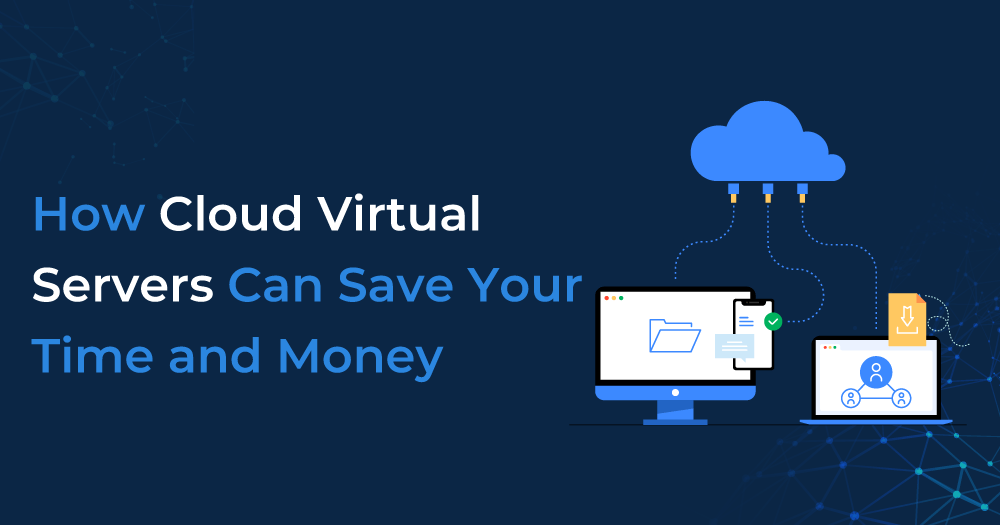Saving money and increasing efficiency are critical in the fast-paced business world of today. Businesses are always looking for methods to save costs and simplify processes without compromising efficiency or dependability. Using virtual servers on the cloud is one remedy that has become very popular recently. There are several advantages to these servers, especially in terms of time and money savings. This article examines the short- and long-term benefits that cloud virtual servers can offer as they change business operations.
Table of Contents
Understanding Cloud Virtual Servers
Cloud virtual servers are essentially virtual machines (VMs) hosted in the cloud. Unlike traditional physical servers, which require significant upfront investment and ongoing maintenance, cloud virtual servers are provided by cloud service providers (CSPs) and can be scaled up or down based on your needs. This flexibility is one of the key reasons why businesses are increasingly turning to cloud solutions.
Time Savings with Cloud Virtual Servers
Quick Deployment:
One of the most significant time-saving aspects of cloud virtual servers is the speed at which they can be deployed. Traditional server setup can take days or even weeks, involving hardware procurement, installation, and configuration. In contrast, cloud virtual servers can be provisioned within minutes, allowing your IT team to focus on other critical tasks.
Ease of Management:
Managing physical servers requires ongoing maintenance, including hardware upgrades, security patches, and system monitoring. Cloud service providers handle most of these tasks, ensuring that your virtual servers are always up-to-date and secure. This reduces the workload on your IT staff, freeing them to work on projects that drive business growth.
Automated Backups and Recovery:
Cloud virtual servers often come with automated backup and recovery options. This means that your data is regularly backed up without the need for manual intervention, and in the event of a failure, recovery can be performed quickly and efficiently. This automation not only saves time but also minimizes the risk of data loss.
Scalability:
The ability to scale resources up or down as needed is a significant time-saver. During peak periods, additional resources can be provisioned quickly to handle increased workloads. Conversely, during quieter times, resources can be scaled back to reduce costs. This dynamic scalability eliminates the need for constant manual adjustments and planning.
Centralized Management:
Many cloud service providers offer centralized management consoles that allow you to monitor and manage all your virtual servers from a single interface. This simplifies administration and reduces the time required to manage multiple servers across different locations.
Cost Savings with Cloud Virtual Servers
Reduced Capital Expenditure:
Traditional server infrastructure requires substantial upfront investment in hardware, software, and data center facilities. Cloud virtual servers eliminate the need for these capital expenditures, as you only pay for the resources you use. This shift from capital expenditure (CapEx) to operational expenditure (OpEx) can significantly improve your cash flow.
Lower Operational Costs:
Operating physical servers involves ongoing costs such as electricity, cooling, and maintenance. Cloud service providers absorb these costs, allowing you to benefit from their economies of scale. Additionally, the need for physical space is eliminated, reducing real estate costs.
Pay-As-You-Go Pricing:
One of the most attractive features of cloud virtual servers is the pay-as-you-go pricing model. This allows you to pay only for the resources you consume, rather than investing in excess capacity that may go unused. This model provides greater financial flexibility and ensures that you are not overpaying for unused resources.
Elimination of Over-Provisioning:
In traditional server environments, businesses often over-provision resources to ensure they can handle peak loads. This results in underutilized resources and wasted money. Cloud virtual servers can be scaled dynamically, eliminating the need for over-provisioning and ensuring that you are only paying for what you need.
Reduced Downtime Costs:
Downtime can be costly for any business. Cloud service providers typically offer robust SLAs (Service Level Agreements) with high uptime guarantees. The built-in redundancy and failover mechanisms of cloud infrastructure minimize the risk of downtime, ensuring that your business operations remain uninterrupted. This reliability translates to cost savings by avoiding the lost revenue and productivity associated with downtime.
Increased Productivity:
With cloud virtual servers, your IT staff spends less time on routine maintenance and troubleshooting. This allows them to focus on strategic initiatives that can drive business growth. Increased productivity translates to cost savings, as your team can accomplish more with the same resources.
Access to Latest Technology:
Cloud service providers continually update their infrastructure with the latest technology. By using cloud virtual servers, you gain access to cutting-edge hardware and software without the need for frequent upgrades. This ensures that your business remains competitive and can take advantage of the latest advancements without additional costs.
Conclusion
Cloud virtual servers offer a compelling combination of time and cost savings for businesses of all sizes. By leveraging the flexibility, scalability, and efficiency of cloud infrastructure, you can streamline your operations, reduce expenses, and focus on what matters most—growing your business. Whether you are a small startup or a large enterprise, the transition to cloud virtual servers can provide immediate and long-term benefits, positioning your business for success in the digital age. Embracing this technology is not just a smart financial decision; it is a strategic move that can drive innovation and efficiency across your organization.
